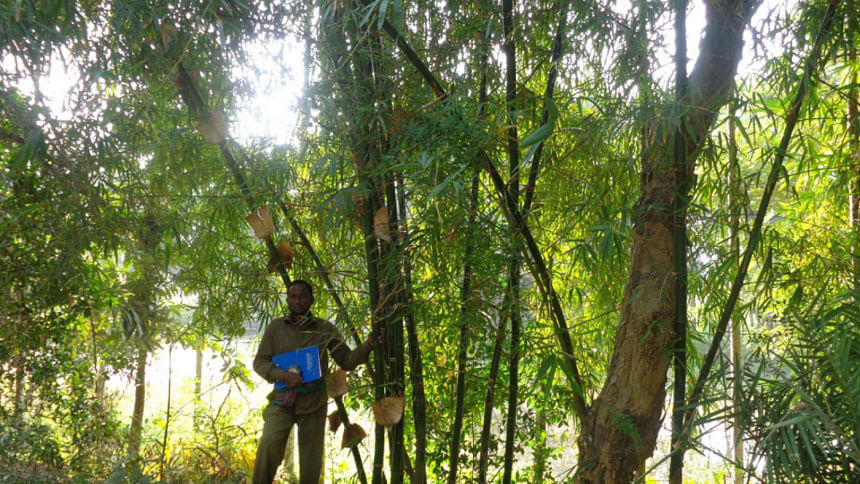Salt-resistant bamboo brings hope in coastal areas

Prior to the introduction of a new salt hardy strain of bamboo in 2010 the plant, despite its usefulness, held little attraction for coastal dwellers. The new strain developed by the Bangladesh Forest Research Institute and adapted to grow well in salty soils has changed that. Nowadays, bamboo is proving increasingly popular in coastal household gardens.
"We had a lot of unused land," says Md Zakir Howlader, from Baher Char in Patuakhali's Rangabali upazila. "Then an officer from the forest research institute gave me some bamboo trees and now a healthy stand covers a good area of my land."
"I bought bamboo trees for Tk 20 each," says Abdur Rahaman Munshi of Char Kukri Mukri in Bhola district. "Now in our household garden there are over one hundred."
According to S.K. Ahiul Islam, divisional officer of the forest research institute's plantation trial division, it's usual for some part of household yards to be devoted to bamboo since many useful household items including baskets, trays and winnowing fans are crafted of bamboo. The variety known as 'bangla bash', locally called 'baijja' can live for up to 45 years.
"In coastal areas," says Islam, "research shows that bamboo clumps are successful at offering protection from natural calamities like storms, a characteristic of particular importance in the context of global warming. The impact of storms and climate change can be reduced if bamboo is planted on a large scale. It would be useful for the forest department or NGO sector to pursue such a project."
"Commercial bamboo farming has been a challenge in coastal areas," says another forest research institute officer, "due to the saline soils. But with the new variety results are promising."
The new salt tolerant bamboo has been introduced with a view to commercial farming in a range of areas, resulting in increased bamboo coverage. Abdul Quddus, from the Barisal office of the forest research institute reports that in Patuakhali's Rangabali where in 2010 within 29 households sampled only 198 square metres was covered by bamboo, nowadays within 639 households surveyed bamboo coverage measures 5,104 square metres. Similar increases have been documented on Bhola's Char Kukri Mukri, in Chittagong's Sitakunda upazila and in coastal Noakhali.

 For all latest news, follow The Daily Star's Google News channel.
For all latest news, follow The Daily Star's Google News channel. 



Comments